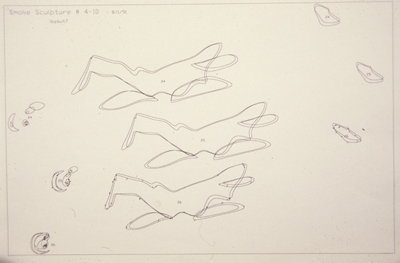
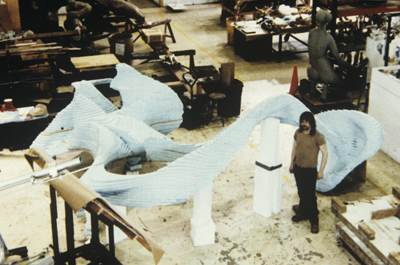
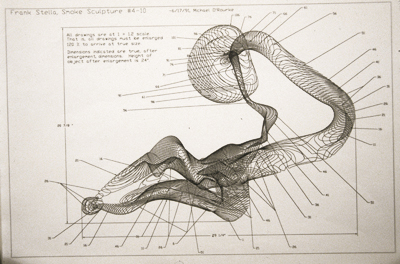
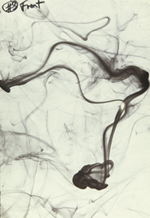
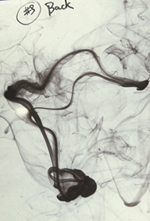
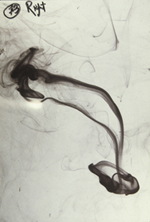
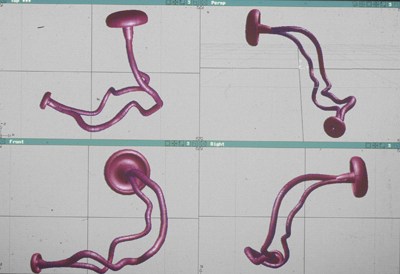
In 1990, Frank Stella, for whom I had worked previously, approached me to see if I could help with a difficult modeling problem.
Stella had become interested in the forms made by smoke floating in the air, and wanted to make sculptural forms like those. After several failed attempts to build these complex forms in his studio, he asked me to try to do so digitally.
Starting from photographs of smoke that Mr. Stella provided with instructions to see if I could "do something interesting", I created three-dimensional digital sculptures, starting with simple tubular forms, and then adding complexity to reflect the fluidity of smoke. Using stereolithography, an early form of what is frequently now called 3d printing, I produced plastic versions of each form. Stella and his foundry people then used the lost-wax process to cast these forms into a variety of metals.
The first finalized sculptures incorporating my digital smoke sculptures were Stella's small-scale Polish Mining Town series of sculptures.
Smoke Sculptures
for Frank Stella
Michael O'Rourke, 1990 - 1992
The next development of this project was for me to devise a way for Stella to fabricate these sculptural forms at large scale. To accomplish this, I wrote code to calculate cross-sectional slices through the forms. I then produced an elaborate series of line drawing construction drawings of the sculpture, slice by slice. These were produced on a pen plotter, and included drawings showing the entire collection of slices for each sculpture, as well as pairings of adjacent slices registered to each other. Stella's assistants enlarged these slice-by-slice drawings to produce large-scale forms that were cast at the foundry into large-scale versions of the sculptural forms I had developed.
that became known as the smoke ring drawings. These construction data were used by Stella for many years for the fabrication of numerous large-scale sculptures.
Click the icons to see samples of the work.
For a published description of the process I used for these sculptures, see the article I I wrote for Sculpture magazine in 1993.